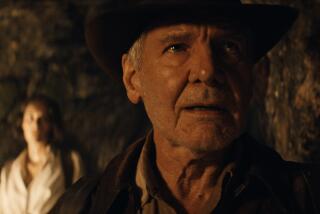Centuries-Old ‘Life Is a Dream’ Reaches Students
- Share via
As a student in a Los Angeles high school, I am responding to Sylvie Drake’s review of “Life Is a Dream” at LATC (Calendar, May 1). I am in the 11th grade at Venice High School and have had the opportunity to attend several productions offered through the “Theatre as a Learning Tool” outreach program.
Perhaps Drake is not aware of the preparation students received before seeing LATC’s adaptation of Calderon’s play. Regarding her comment that questions how the outreach program could think of presenting this as a “classic” to students: The fact is that we were not prepared for a classic but for a lesson on how a classic can be adapted and made into a contemporary theater experience.
Furthermore, my classmates and I enjoyed the experience. For many of us who rarely see theater, it was exciting to discover that the complex philosophical issues addressed in a 17th-Century play could be made so accessible to a youthful and heterogeneous 20th-Century audience. In particular, when the son in the play, Segismundo, is feeling inexperienced and ready to explore the world, this is how many of us feel as teen-agers not yet adults.
The interpretation of a play is an individual experience. To many, the modernization of “Life Is a Dream” is confusing. As a participant in “TAALT,” however, I do believe it was a valuable experience to see how a play written more than 300 years ago can be modernized to illustrate relevant issues.
Audiences of this production should not prepare themselves for Calderon’s original “La Vida Es Sueno” but for a new adaptation of “Life Is a Dream”--and the newly revitalized points it makes.
More to Read
The biggest entertainment stories
Get our big stories about Hollywood, film, television, music, arts, culture and more right in your inbox as soon as they publish.
You may occasionally receive promotional content from the Los Angeles Times.










